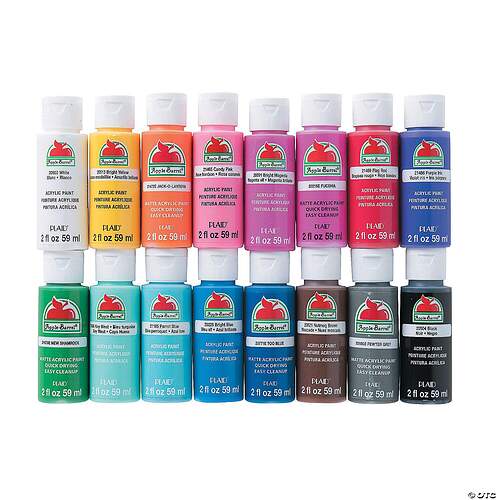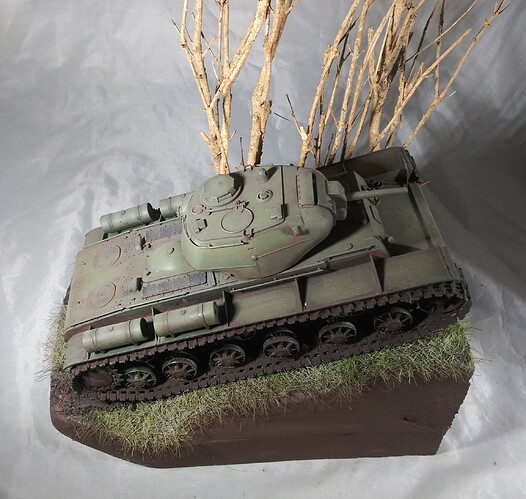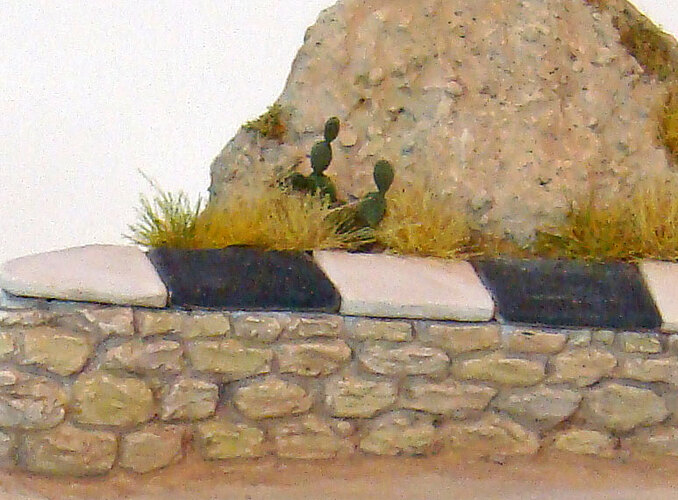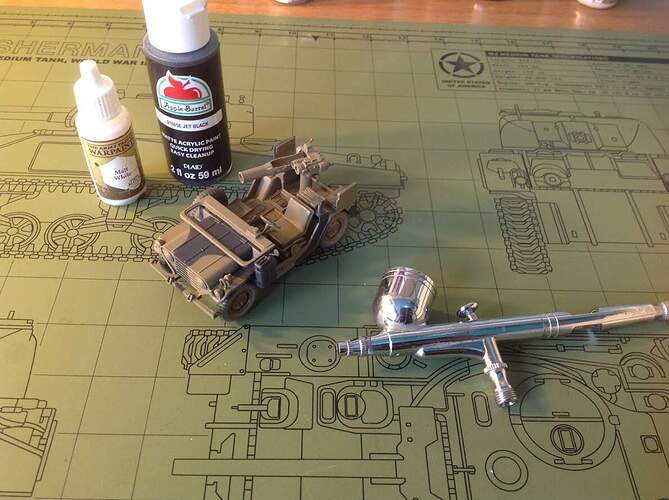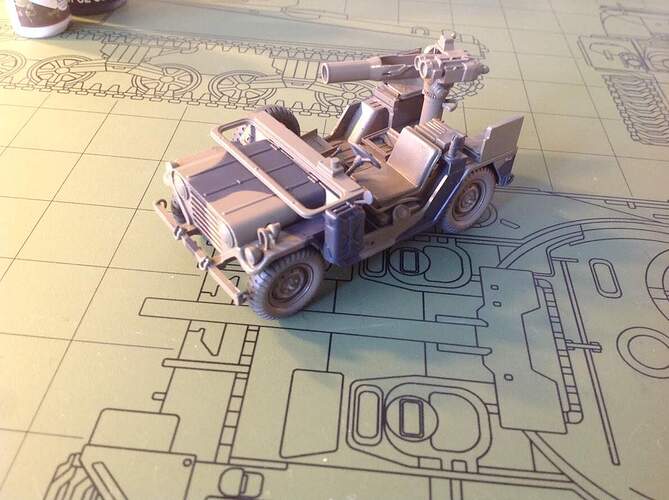So lets open the proverbial can of worms here and discuss craft paint . No matter what your feelings one way or the other it is the red headed step child of the paint world.
So im curious what people think of it???
IIRC that’s how Floquil started out.
I don’t use them but I have seen others use them very effectively. To each their own.
Tank . I was curious what people thought . I use them almost exclusively for airbrush stuff.
Maybe there are other uses as well
I use them almost exclusively for my ground work.
Inexpensive and in fairly large bottles (compared to model paints), I don’t mind mixing them or being liberal with their usage. I like that they thin and clean up with ordinary water, which also makes them compatible with plaster, Celluclay, PVA / white glue, etc. which are all materials that I use for groundwork and textures. I don’t have to wait for everything to get bone dry before using the paints. Also, the craft paints can be mixed with plaster and / or Celluclay to pre-color those materials.
If you pay attention to the colors and ignore the goofy, crafty names, you can also find colors that are near exact matches to many “model” paint colors. For example, I have one brand of craft paint that has a color called “Fawn” that’s a dead ringer for Tamiya Flat Earth. Another called “Parchment” is the same color as Tamiya Buff, and so it goes.
I recently picked up some florescent craft paint colors to use to make “glowing embers” on some scenery that had a burn pit / trash heap and several cut-off 55 gal. drums bring burned off behind some latrines that I had sculpted “flames” in from epoxy putty. These were much cheaper than their equivalent model paints and totally suitable for the job (which only required a few very small dabs of red, orange and yellow).
Finally, it seems like the big-box craft stores (Hobby Lobby and Michael’s in particular) change craft paint brands like they change their under ware, so these paints are always going on sale and out of stock to make room for the next brand (which they no doubt buy wholesale a few pennies cheaper than the last brand). You can by a ton of this stuff sometimes for much less than a buck a bottle. However, ignore the color names, and the same color matches are easy to find.
However, I do draw the line at using these on my actual models. The pigments are coarse, and they often require thick applications which obscures details. They’re a good supplement for model paints for some things that don’t demand particularly high quality.
I do the same as Mike. For air brushing or brush painting on my models I will use Vallejo and army painter stuff but I will occasionally paint some details with this cheap paint as long as I’m sure I wont cover any details. Plus you can get them for like $0.50 as opposed to $3-5 for actual model paints.
Craft paint for ground work, plaster, Celluclay etc as others mentioned sure.
For painting a model craft paint isn’t on the menu. Floquil or Floquil Military Colors have beeny first choices for a long time. Possibly other lacquers or enamel paint too depending on project
Yes they are great for ground work . I airbrush them on my models . I do use stylenrez primer. The trick to airbrushing them for me is I keep a bottle of premade thinner on the spray area . its a simple recipe of 50% bottled water and 50 % future ( the clear stuff).
i am still curious if other people have found a different way to thin it.
Also what is the ratio yall are using when mixed with plaster , celluclay , etc.?
Attached is a image of the finished effect
I don’t try to give the plaster or Celluclay a final color with the paint mixed in, just to pre-color it some to mitigate the risks of missing a spot later or chipping something. To this end, I just squirt in some paint along with the water and judge by eye if it looks like the material color has changed enough to make a difference once dry.
For actually paint the ground work, I’ll usually thin the craft paints down with water to make them flow better and then use multiple coats. Again, I just judge this by eye and observe how the paint absorbs into the brush bristles.
I’ll also thin them down to use like washes or stains which can be effective on plaster surfaces. Again, multiple thin coats are more controllable than heavy single coats.
Almost all of the ground work here is plaster (over Styrofoam forms). The stonework, road surface and cap stones on the walls are ordinary plaster of Paris and the stony earth textures are Woodland Scenic plaster which has an aggregate, texture material in it. Under the vegetation areas are small applications of Celluclay to replicate less stony, hard soil.
However, all of this was painted using cheap craft paints, either nearly full strength (the white-black cap stones and the flat, vertical sides) or with washes and stains on the rocky, stony earth and the cut stone walls.
I find that it’s a versatile medium that works well with other groundwork materials.
Awesome thank you . That is kinda what i thought .
Not so much craft paint, but I do have some big bottles of artist acrylics (burnt sienna, raw umber, etc) that are great for weathering by brush. And they are good for groundwork and pre-mixing into Pollyfilla to make bases! But I don’t try to push them through an airbrush so pigment size isn’t an issue…
Barkingdigger. Thanks . just curious . I do airbrush them . once you get the thinning ratio they qork great
I’ve used them with good results for years; I really like painting them over cured enamel and weathering them as I mainly do German WW2 armour. Would also, I imagine, work well on Japanese fighter aircraft. The trick lies in proper viscosity consistency and the temperature/humidity found in your spray booth area. If you’re going to mix something unique make sure that you document the mix or you’ll have a heck of time replicating it later when you forget. And you will.
What the ratio you use? Might be a interesting solution for when I inevitably run out of some of my name brand modeling paints.
I make thinner from 50% bottled water and 50% future . that is used to thin the paint to a milky consistency , a bit on the heavier side . Spray light coats over a god primer.
I also use a hair dryer on low to accelerate the dry time.
Huh interesting. I will try it for the black camo on my M151.
Would you mind if I posted a pic on this thread to show how it went down?
Absolutely post it here … If you need help with the paint message me . i will try to do a video soon on it
Ok so I sprayed the model with AK paints yesterday and let them dry overnight.
Then this morning I masked the model with blue tack and sprayed a mix of Apple barrel Jet black and army painter white thinned with water and future as Chris said under a heat lamp with my dual action cheap Master airbrush. It worked really well! It sprayed about as nicely as the AK paint did!
One of my reference photos.
Overall I’m very happy with how it came out. I will defiantly be trying this on more of my builds. Plus it saves me a little money…
Brother I am glad that helps and the build looks great. On a side note all the craft paints work about the same ,ceracoat seems to be a little better for brush work by hand.
